Counting practice Geometry Worksheets for Ages 5-9
7 filtered results
-
From - To
Discover engaging Counting Practice Geometry Worksheets designed specifically for children aged 5-9. At Kids Academy, we combine fun geometric shapes with essential counting activities to develop foundational math skills. Our high-quality, printable worksheets make learning interactive and enjoyable, helping young learners confidently identify, count, and interact with various shapes. Perfect for parents and teachers seeking fun, educational resources to enhance their child's problem-solving and critical thinking abilities. Transform counting into a playful adventure with our expertly-crafted geometry worksheets. Explore today and ignite a passion for math in your child's early years!


Let's Count Faces! Worksheet
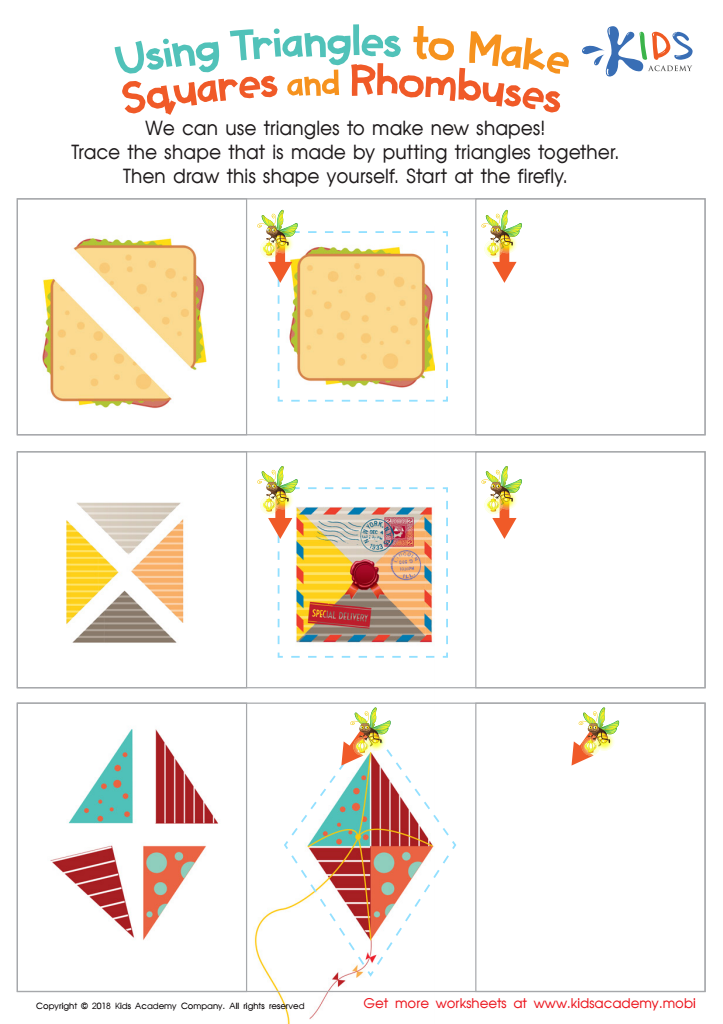

Using Triangles to Make Squares and Rhombuses Worksheet
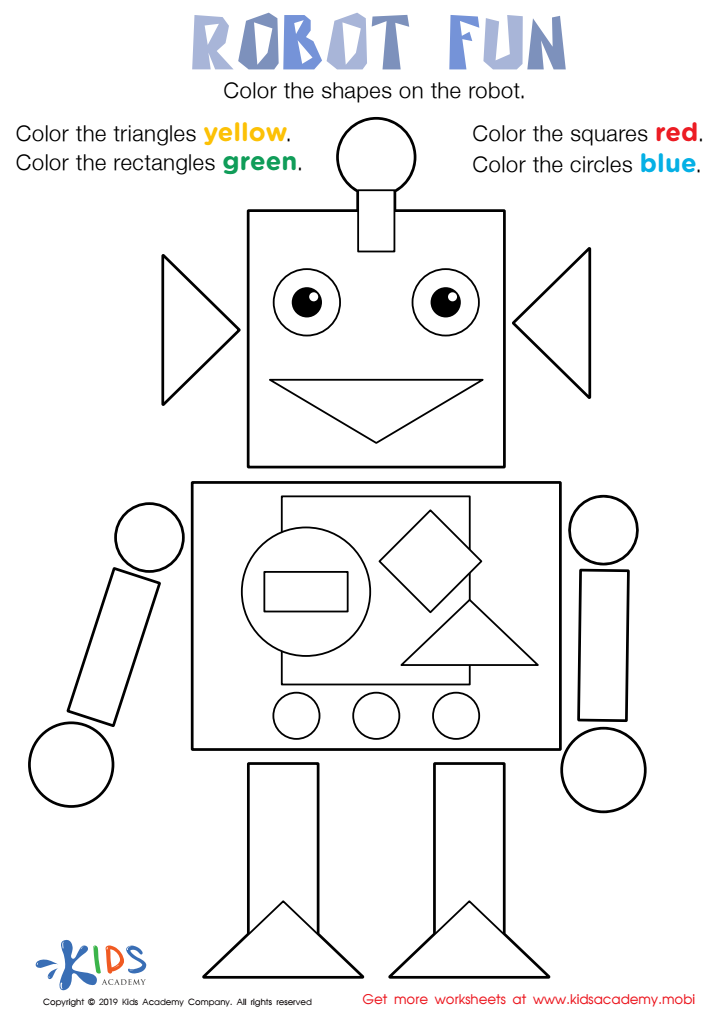

Robot Fun Worksheet
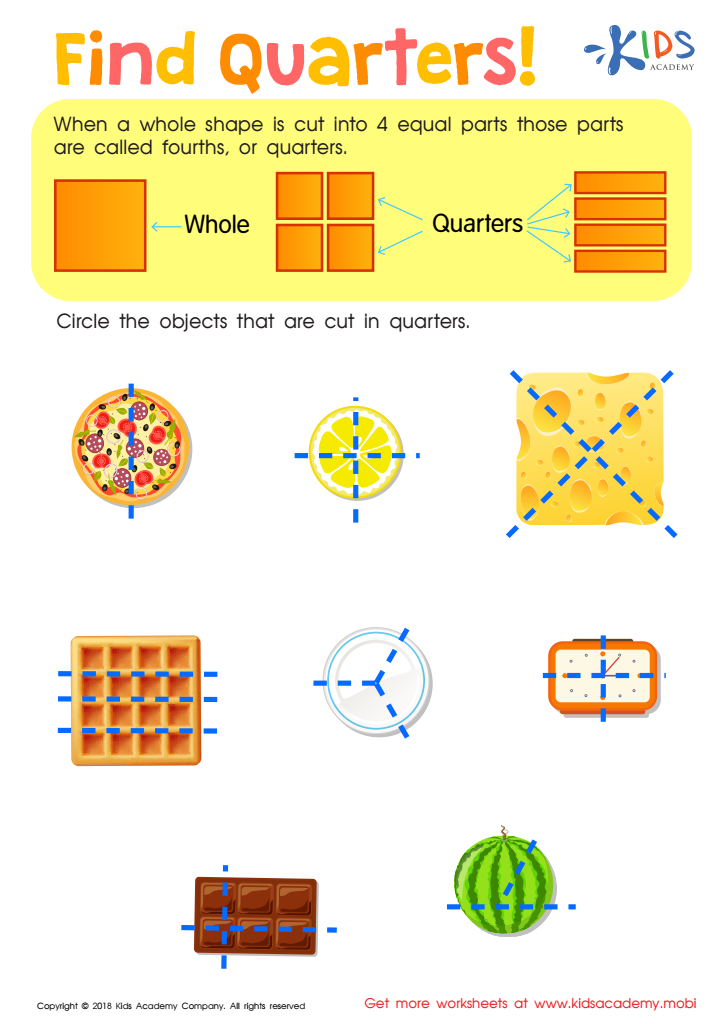

Find Quarters Worksheet


Let's Look! Part 2 Worksheet
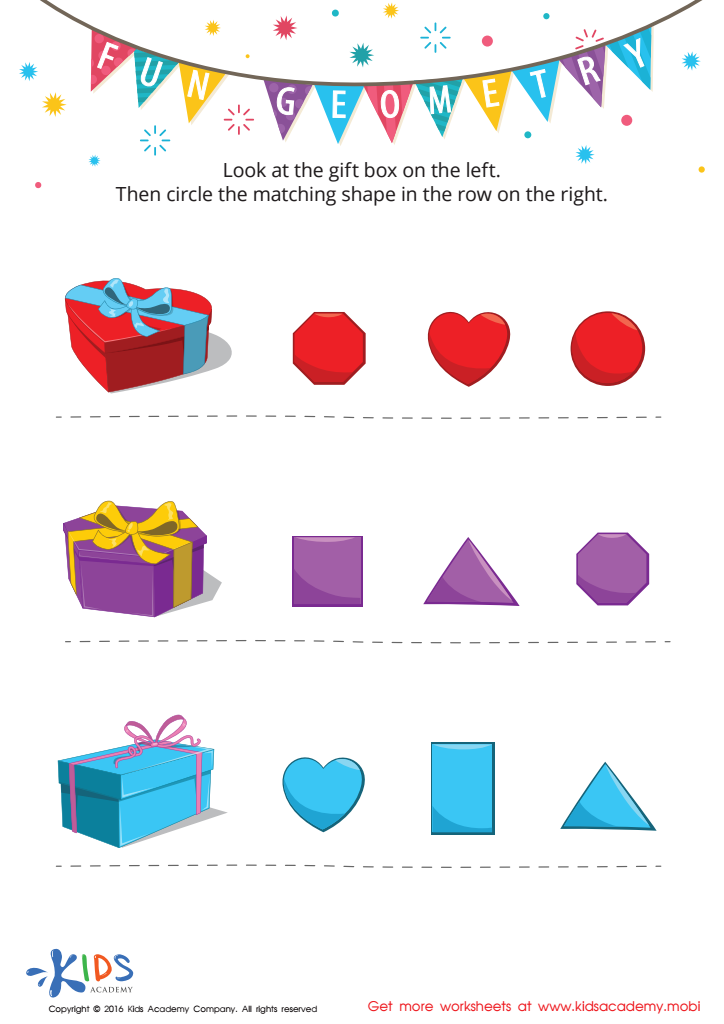

Fun Geometry Worksheet
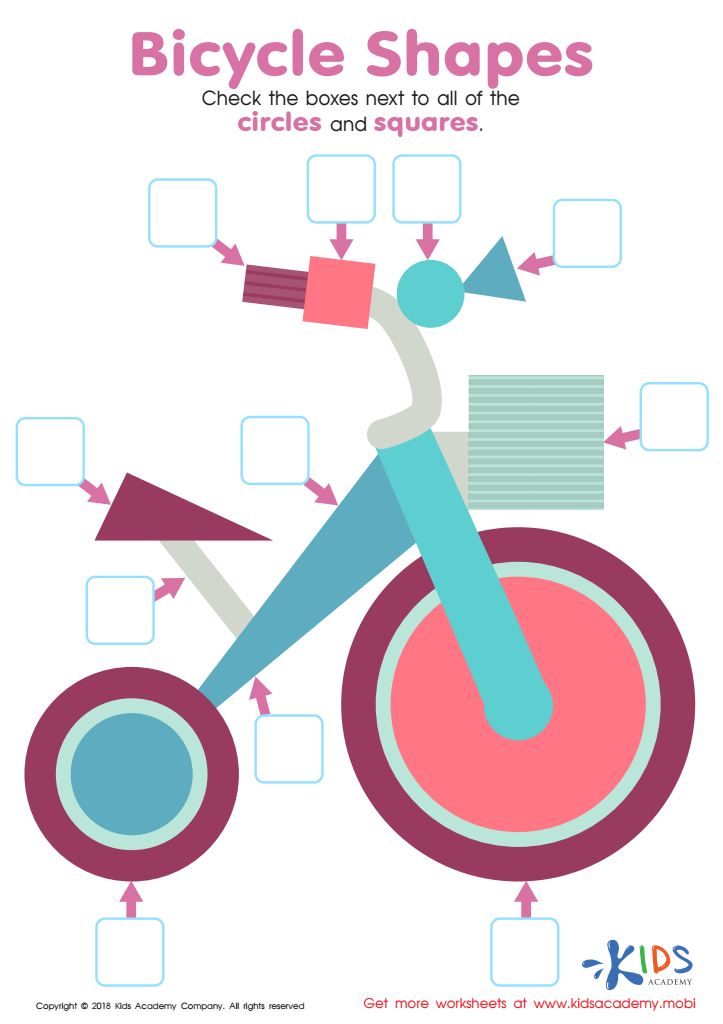

Bicycle Shapes Worksheet
Counting practice is a crucial foundational skill for young children (ages 5-9) because it forms the basis for understanding more complex mathematical concepts later on. When children count objects, they are not only learning the numbers themselves but also developing number sense, which is essential for addition, subtraction, multiplication, and division as they grow older. Counting helps children grasp the concept of quantity, order, and the relationships between numbers.
Geometry, on the other hand, introduces young students to shapes, sizes, spatial relationships, and properties of figures, which are important for numerous everyday tasks and cognitive development. For instance, when kids identify patterns or shapes, they sharpen their visual and spatial reasoning. This kind of reasoning is necessary for problem-solving and critical thinking, skills they will use across the school curriculum, including in science and art.
Incorporating both counting and geometric lessons in early education enriches a child's learning experience by linking numbers with physical shapes and forms. This holistic approach makes abstract concepts more tangible, aiding in better retention and deeper understanding. Moreover, early exposure to these skills can boost a child's confidence and interest in STEM (Science, Technology, Engineering, and Math) subjects, setting the stage for academic success in the future. Parents and teachers thus play an essential role in the cognitive and intellectual development of children by integrating these practices into their learning routines.
 Assign to My Students
Assign to My Students































